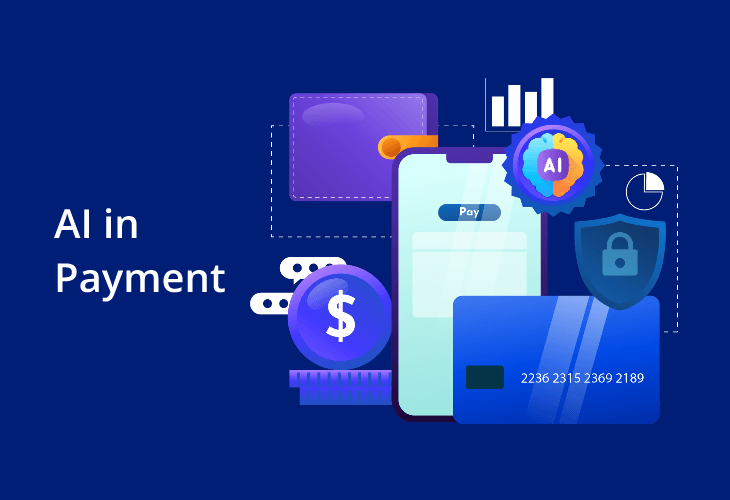The world of payments is changing at a fast pace and this is due to ongoing developments in artificial intelligence. When financial institutions are struggling to adapt to the changes, AI rises as a dominant technology that helps to redesign payment systems, improve customer experiences, and optimize processes. However, this revolution has its own revolution that needs to be surmounted carefully. In this article, we learn how and to what extent artificial intelligence payments are reshaping the field and some of the challenges companies face.
AI in the New Payment Services Environment
The old financial architecture is barely able to keep up with the innovation being offered by the fintech disruptors. As mobile payments, peer-to-peer systems, and real-time payment systems like FedNow in the United States and Pix in Brazil come into existence, artificial intelligence payment is also a key factor to become competitive. AI helps financial institutions to handle large volumes of data resulting from transactions within a short time. These techniques enable the banks to gain more insights about customers’ actions, their needs and expectations, as well as work on their strategies to improve the products and services they offer and make their operations more effective.
With the help of AI algorithms, the payment systems are able to forecast the consumption behavior and find out the churn threats. For instance, the customer’s behavior such as a sudden reduction of account balances together with new installation of banking applications can call for real-time targeted offers to retain the customer. Such levels of personalization, achieved with the help of artificial intelligence payments, open great opportunities for customer relations and customer retention.
AI in Fraud Prevention: A Game-Changer
Artificial intelligence payments are one of the most useful when it comes to the fight against fraud. The conventional approaches of fraud control are based on the use of heuristics and set templates, which are relatively simple to overcome by fraudsters. AI, on the other hand, employs machine learning to identify out of norm and new emerging patterns of fraud schemes in real-time. Furthermore, payments with AI are being extended by generative AI, meaning that analysts can ask fraud data questions in plain English and can easily detect fraudulent transactions and the trend behind them.
However, as with any integration of sophisticated technology into operation the implementation of AI in fraud prevention has its drawbacks. AI models in financial institutions require updating frequently due to the change in fraud strategies. In addition, they have to make sure that data gathering and processing through AI are not in violation of data privacy laws such as GDPR and CCPA.
Optimizing operations with the help of artificial intelligence
Aside from fraud detection, it can also use AI in artificial intelligence payments to improve the back office. AI can be used by relationship managers to study payment behaviours and look for ways to sell other products or upgrade existing services. For instance, clients who have low payment activity will be considered for financing, while early payments will suggest an opportunity to sell investment products.
While this is already a major step forward, generative AI goes even further by generating automated recommendations, emails, and reports, which saves a lot of manual work for the staff and can be used for more strategic tasks. However, many of the banks remain constrained by legacy systems that do not easily interface with artificial intelligence applications. Updating these infrastructures is a crucial shift toward optimizing AI in artificial intelligence payment systems.
The Challenges Of Implementing Artificial Intelligence
Although AI holds significant promise, several challenges must be addressed for successful implementation in the payments industry:
- Data Privacy and Security: Since AI works on data, the financial institutions have to follow the code of data privacy act governing customer data to balance the protection of data and at the same time allow for the development of AI solutions.
- Legacy Infrastructure: In many institutions, there is a lack of computer systems that are compatible with AI technologies. That is why such changes as migration to the modern architectures, including the cloud ones, is necessary to unleash the potential of AI in artificial intelligence payments.
- Regulatory Compliance: One of the challenges is the dynamic regulatory standard for AI in financial services. AI used by financial institutions must be compliant with the changing laws and the system must be in line with the legal requirements.
- Talent Acquisition: For AI to be effective, financial institutions must invest in creating expertise. To create, oversee, and optimize AI models for payments, there is a need to have a competent workforce.
Artificial intelligence payments – The State of Play and Recommendations
To overcome these obstacles, financial leaders can follow these best practices:
- Incremental Adoption: Do not disrupt large systems completely and introduce AI only with middleware solutions. This approach minimizes interference while at the same time enabling the incorporation of current technology.
- Focus on Quick Wins: Begin with use cases such as fraud detection or tailored customer service for which benefits of AI will be seen right away.

- Data Governance: Establish proper data management strategies in order to protect privacy, disclose information, and meet legal requirements and standards.
- Partnerships: Partner with fintech up-and-comers, cloud based services, and AI experts to get the most advanced tools and manage compliance issues.
Artificial intelligence payments are revolutionizing the financial sector through enhancing efficiency, customer experience and security. Moreover, successful implementation is not an easy action to take and needs to be planned well, taking into account innovations and their compliance with the existing rules and changes in infrastructure. AI in payment systems will continue to improve and advance and its potential is in delivering not only better and secure payment systems, but also smarter and more intelligent in the future.
Source :: forbes



